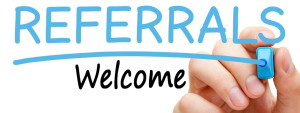National Breast Cancer Awareness Month
October is National Breast Cancer Awareness Month – a time to promote regular mammograms and increase early detection of breast cancer. About 1 in 8 women in the United States will get breast cancer. And every 74 seconds, someone dies of breast cancer.
Any woman can get breast cancer, even those who have no family history of the disease. Two important risk factors for breast cancer are: being a woman and growing old; however young women can and do get breast cancer.
No one knows the cause or how to prevent breast cancer, therefore; early detection is vital. If found early there are more treatment options and a higher survival rate. To increase the chances of early detection, the American Cancer Society recommends the following:
1. Mammograms
A mammogram is an X-tray of the breast and is the best screening tool available for early detection. Yearly mammograms are recommended starting at age 40. Most insurance plans, including Medicare, cover the cost of mammograms. However, if you cannot afford one or do not have insurance, contact the Susan G. Komen breast care helpline at 1-877-465-6636 for free or low cost options in your area.
2. Breast Exam
A breast exam is a physical examination of the breast by a doctor or nurse to check for changes or lumps in the breast or any other problems. Medical experts recommend that women in their 20s and 30s receive a breast exam every three years as part of their health exam. Women 40 and older should receive a breast exam every year.
3. Breast Self Awareness
All women should know what is normal for them. It is important to become familiar with how your breast normally look and feel and report any changes to your doctor. Women ages 20 and older are encouraged to do a self breast exam once a month. Click here to learn how to do a breast self exam.
In addition to the above, contact your doctor if you notice any of the following breast changes:
- Lump, hard knot or thickening inside the breast or underarm area
- Swelling, warmth, redness or darkening of the breast
- Change in size or shape of the breast
- Dimpling or puckering of the skin
- Itchy, scaly sore or rash on the nipple
- Pulling in of your nipple or other parts of the breast
- Nipple discharge that starts suddenly
- New pain in one spot that does not go away.






